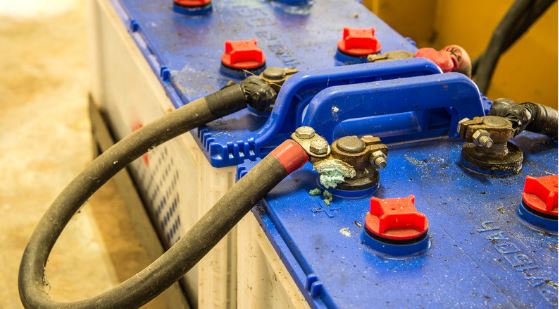The storage of solar energy in “sand batteries” could be a way for Finns to get through the cold winter. This is even more difficult after Russia cut off its electricity and gas supplies.
This new technology was developed by Markku Ylonen and Tommi Eronen, young engineers from Finland, who are also the founders of Polar Night Energy. It could be used around the world.
Although there are many other research groups that are testing the limits on sand’s potential green energy storage, these two are the first to successfully rig it for a commercial power plant.
The silos contained around 100 tonnes of this fine stuff. They were placed high in a silo at Kankaanpaa’s power plant in Kankaanpaa, in the southwest of Kankaanpaa, in late May. This was just after Putin had cut off the country in retaliation to NATO membership.
Markku describes the inspiration behind the company’s creation as “We were discussing how – If we had the liberty of designing a community for ourselves, how could we solve our energy problem in such an enclosed environment?”
“Then, quite quickly, especially in the north you run into the problem energy storage if your goal is to produce as clean as possible.
They began to play with ideas and eventually settled on sand as a way to store the abundant electricity generated by the sun shining or the wind blowing at high speeds.
The key to unlocking their potential is finding a way of storing these variable renews. Markku says that lithium batteries are great for certain applications. However, due to their environmental cost and inability to absorb large amounts of energy, they can’t be used for many other purposes.
It turns out that grains of sand are quite large when it comes to energy storage.
It is a very simple structure. The tower, which is tall and grey in color, is filled with low-grade nisip and heated by excess solar or wind electricity.
This is called resistive heating. It is a process where heat is created by friction caused when an electric current passes through any material other than a super conductor. The heat exchanger circulates the hot air in the container.
Sand can store heat at 500C for several weeks, making it a useful store of winter energy. The battery heats up the hot air and then releases it to warm the water in Tampere’s district heating network. All are beneficiaries: homes, offices, and even the local swimming pools.
Markku describes storage as “really nothing fancy”. The complex part of the storage is on the computer. We need to understand how heat or energy moves within the storage so we know exactly how much we have and how fast we can charge and discharge it.
The large battery at Vatajankoski’s power plant is made from sand taken from a nearby pit.
The 33-year old explains that they wanted something that could be found almost anywhere in the world. But is sand really as widespread as we might believe?
According to a Dutch study, the demand for this construction material will rise by 45 percent over the next 40 year. Building sand is usually extracted from rivers and lakes. However,’ Sand pirates‘ are increasing its disappearance from these ecosystems.
For the Finnish engineers, however, it doesn’t matter where the sand is from. Although builder’s sand was used in the prototype to limit transport emissions, sand batteries can be made with any type of sand that is high enough and within certain thermodynamic parameters.
Markku says, “We don’t want to compete [with the construction industry] for good qualities of sand.”
He says that the emphasis is on “helping the solar and wind sectors to grow” and less on sand. We believe that this is only one component to making a society with high levels of solar and wind power production.
It’s not surprising that Polar Night Energy has received so much interest, considering Finland’s geopolitical position is in a perfect place and the world desperately needs to stop burning fossil fuels.
The company received many inquiries about making heating devices for winter after its success in Tampere. Markku says that their ambitions extend far beyond western Finland.
